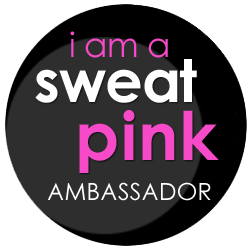If you often get knots in your muscles or experience a tight sensation after working out, then a foam roller is exactly what you need to loosen up your muscles again. While foam rolling, you may experience some pain, which is why some people have a “love-hate relationship” with their foam roller.
Check out some techniques below, thanks to my guest blogger Lauren Byrd that you should remember when using a foam roller.
My sentiments on this topic are in italics - because I love foam rolling!
When you decide what muscle or part of your body you want to foam roll, place the foam roller on or under the muscle.
For example, if you are rolling out your hamstrings, you will want to sit directly on the foam roller at the place where your hamstring is located. Apply moderate pressure by lifting up your other leg so that all the pressure goes to the area you wish to roll.
Follow these steps as you roll other tight places on your body. Be sure you don’t apply too much pressure or you could hurt yourself.
Roll slowly
When you roll slowly, you are able to find the points that are too tight. Some areas will be painful, so it is important to pause and hold when you find those areas. After holding for several seconds, you will feel the muscle release. Repeat this process in other areas as needed.
Don’t roll a bone or joint
Foam rolling your actual joint or bones won’t do much good. Be sure to avoid knees and elbows when rolling out.
Here is a suggested foam rolling checklist:
Core: upper back, chest, abs, hip flexors, glutes, shoulders
Extremities: calves, IT bands, adductors, quads, hamstrings, tibialis anterior
As with any massage, you’re going to want to make sure that you stay hydrated and drink lots of water afterwards. Water will help the kidneys and other organs process the various substances which move through the body after toxins have been released after a massage.
Be sure to breathe deeply throughout your foam rolling stretches! (Especially when it is uncomfortable, I always forget to breathe, but that helps release the tension) Also, foam rolling isn’t just beneficial after a workout, a recent study found that using a foam roller before your workout can reduce muscle soreness afterward. I foam roll BEFORE every single workout to warm up my muscles AND I foam roll after working out
Remember, that pain is only temporary and you will benefit from using a foam roller after exercise. If you use your foam roller daily, you will notice improvement and to help trouble spots from occurring. Go at your own pace, and don’t use too much pressure.
- What muscle do you like to foam roll?
- Do you have a favorite brand of foam roller?
Lauren and I shared our answers below - but leave a comment with yours!
Lauren: Mine would definitely have to be my hamstrings and shoulders. Although these are very different, I tend to get knots in my shoulders because of tension I carry in my neck. And there is nothing quite like rolling out your hamstrings to feel a release after an intense workout. My favorite is my Fitness Gear 24" Foam Roller - I got it from Dick's Sporting Goods
Amber: I love LOVE rolling out my upper back and shoulders, because like Lauren I carry a lot of tension there and in my shoulders. It feels great on my calves and my hamstrings "hurt so good". I love my GRID Trigger Point Roller - best brand hands down, and is the image I used at the top of the post.
Lauren is a contributing writer for Orangetheory Fitness. She regularly produces content for a variety of lifestyle and fitness blogs. She loves to spend her free time traveling and being active.


















